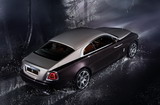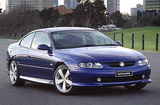Complex Car Electronics Pose New Problems For Motorists
The number of breakdowns caused by electronic malfunction has increased by over
20 per cent in the last 20 years. Evaluation of 1.9 million breakdowns handled by the German ADAC motoring organisation in 2004 showed that electronics-derived breakdowns now account for 36 per cent of all call outs.
Over the same period breakdowns due to other causes have decreased. In 1985 the causes were much easier to diagnose – the starter motor packed up or the carburettor failed. Nowadays electronic control units are able to detect mechanical problems early before you grind to a halt.
However, with electronics now controlling so many automotive components, it is much more difficult for the average driver to locate the reason if the car does break down at the roadside. Matters will only get more complex in the future. In 2004 electronics accounted for 25 per cent of all the parts in a car. By 2010 VARTA, the company supplying batteries for more than 60 per cent of all new cars sold in Europe, expects this to rise to 35 per cent.
Although there can be no doubt that today’s cars are so much more reliable than their forebears, the control units that contain diagnostic tools can be temperamental and function incorrectly if, for example, the power supply is inconsistent, such as when charging the battery.
Whatever the cause of the problem, it always impacts adversely on the battery. ADAC statistics show that the number of battery failures since 1996 has doubled from eight to 16 per cent.
An extensive ADAC comparison test of car batteries in 2004 showed clear differences in quality and battery performance, but even the strongest batteries fail if the electronic control units forget they should ‘sleep’ – in other words not consume energy – during extended periods of idling.
The consequences can be equally detrimental if something as simple as touching the door handle activates other functions in the car, such as comfort and driver aids. The electronics are activated and the battery, sooner or later, is drained of the energy it needs to start the engine and power all the ancillary equipment.
Winter driving and cold starts on the way to work place even greater stress on the battery’s ability to cope with the conditions. In recent years more powerful calcium-silver car batteries have displaced traditional lead-acid designs to cope with major advances in automotive technology.
Many of these sealed, no maintenance batteries have a condition monitor like VARTA’s magic eye to help drivers tell at a glance whether it is healthy, needs charging or is about to fail. But if you are not sure, VARTA specialists displaying free battery test signs can check it for you. You can locate your nearest stockist online at www.varta-automotive.co.uk, just click on the dealer search feature.
VARTA, which is able to meet 99 per cent of all replacement requirements with its Blue Dynamic batteries for European and ASIA Dynamic batteries for Far Eastern models, has recently completed the loop with the launch of a range of Ultra Dynamic car batteries using the latest AGM (absorbent glass mat) technology to meet replacement demand for these high tech OE fitments.
Two sizes with 70 amp hour and 95 Ah ratings provide 92 per cent market coverage for models from such car makers as Audi, Mercedes-Benz and Volkswagen fitted with AGM batteries as original equipment.











